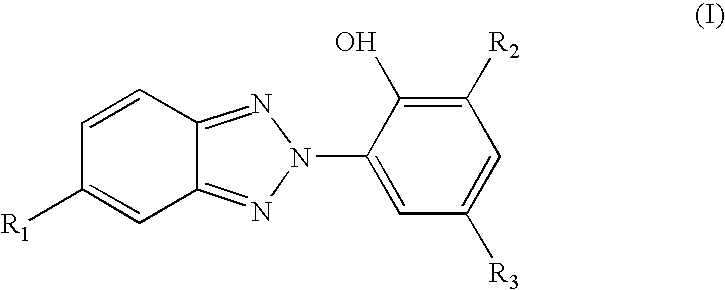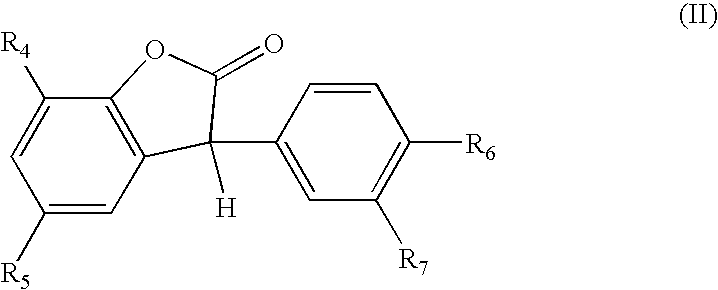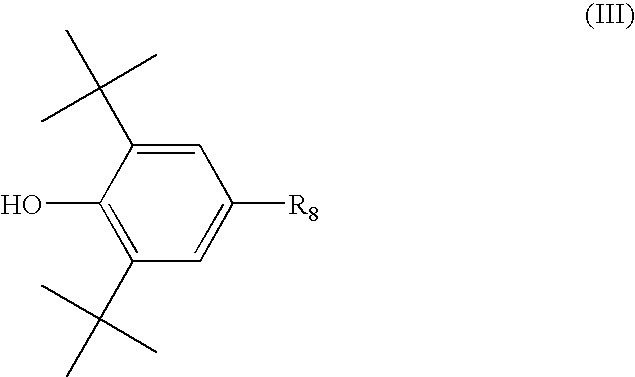Reduction of discoloration in white polyurethane foams
a polyurethane foam and discoloration technology, applied in the direction of chemical inhibitors, other chemical processes, chemical apparatus and processes, etc., can solve the problems of difficult to provide long-term white coloration, low protection from such a deleterious effect, and high propensity for discoloration and yellowing of polyurethane foam articles, etc., to achieve excellent protection from yellowing and reduce the chance of combustion
- Summary
- Abstract
- Description
- Claims
- Application Information
AI Technical Summary
Benefits of technology
Problems solved by technology
Method used
Image
Examples
Embodiment Construction
[0030]A standard polyurethane foam article was first produced to investigate the results of light, gas, and thermal exposures in terms of any discolorations, yellowings, and / or other types of degradations. Such a foam was produced through the reaction of the following components:
[0031]
TABLEComponentAmountF3022 Polyol 100 partsWater4.53 phpDABCO TL (catalyst)0.15 phpDABCO T10 (catalyst)0.30 phpL520 Silicone (from Witco) 1.0 php80 / 20 toluene diisocyanate43.6 phpAdditive from Category A (Tinuvin 326)as notedAdditive from Category B (HP136)as notedAdditive from Category C (Irganox 5057)as notedAdditive from Category D (Irganox 1135)as noted
[0032]Upon mixture within a reaction vessel, the reaction created a “health” bubble (indicating gelation and blowing balance), and the vessel was then exposed to 185° C. (generated within a microwave oven to simulate actual heat history encountered on an industrial production level) for about 10 minutes. The resultant foam bun was then sliced in half ...
PUM
| Property | Measurement | Unit |
|---|---|---|
| temperature | aaaaa | aaaaa |
| composition | aaaaa | aaaaa |
| structure | aaaaa | aaaaa |
Abstract
Description
Claims
Application Information
 Login to View More
Login to View More - R&D
- Intellectual Property
- Life Sciences
- Materials
- Tech Scout
- Unparalleled Data Quality
- Higher Quality Content
- 60% Fewer Hallucinations
Browse by: Latest US Patents, China's latest patents, Technical Efficacy Thesaurus, Application Domain, Technology Topic, Popular Technical Reports.
© 2025 PatSnap. All rights reserved.Legal|Privacy policy|Modern Slavery Act Transparency Statement|Sitemap|About US| Contact US: help@patsnap.com



